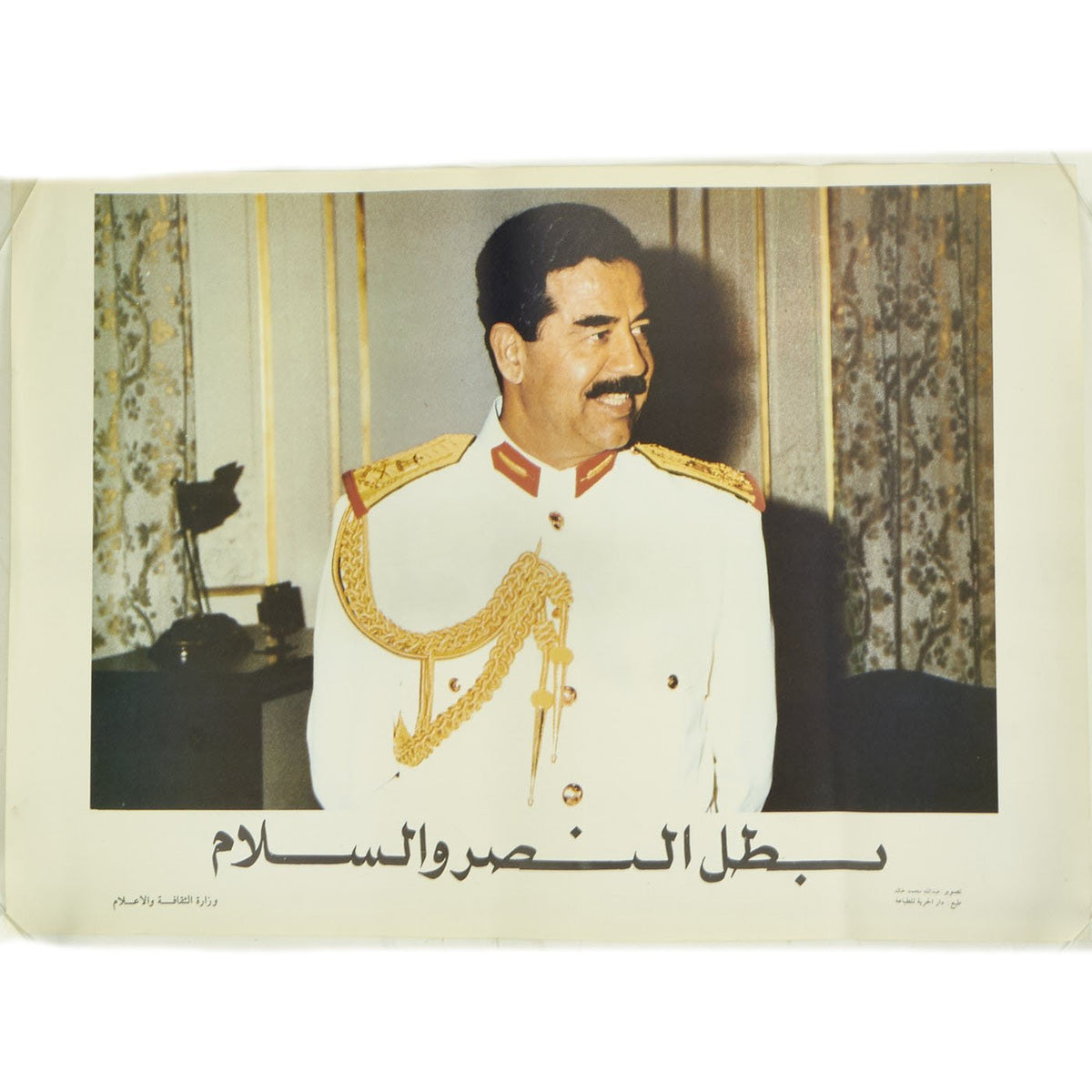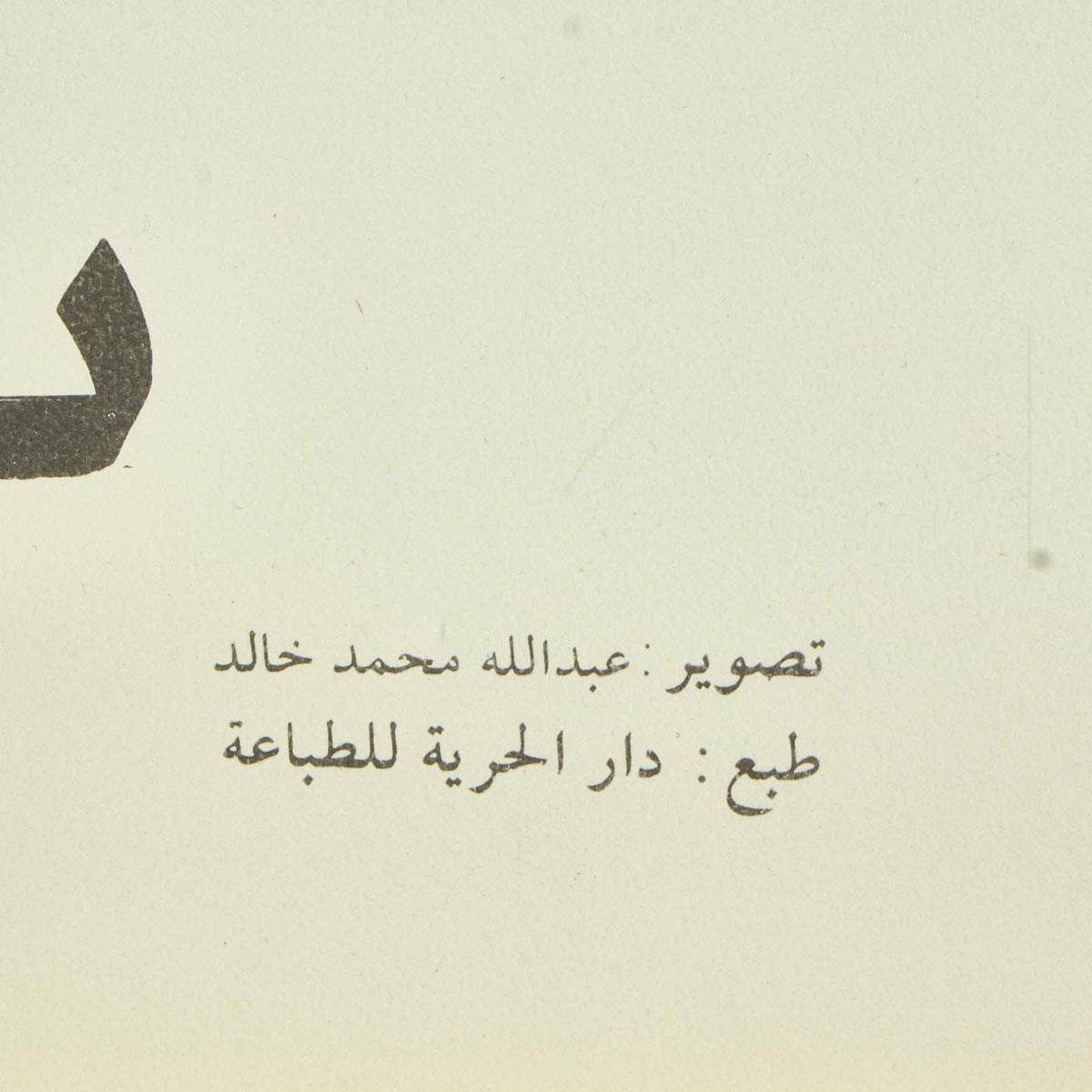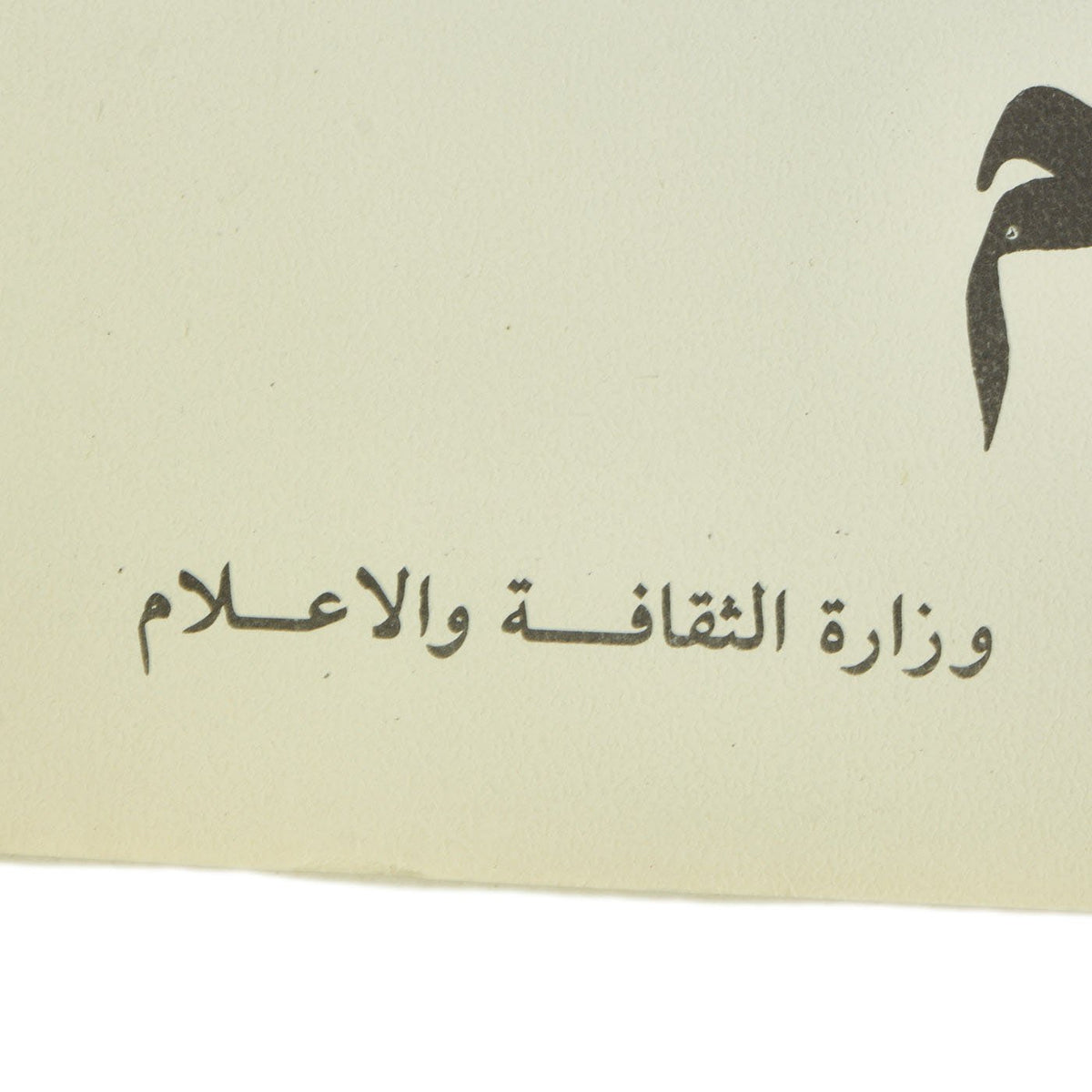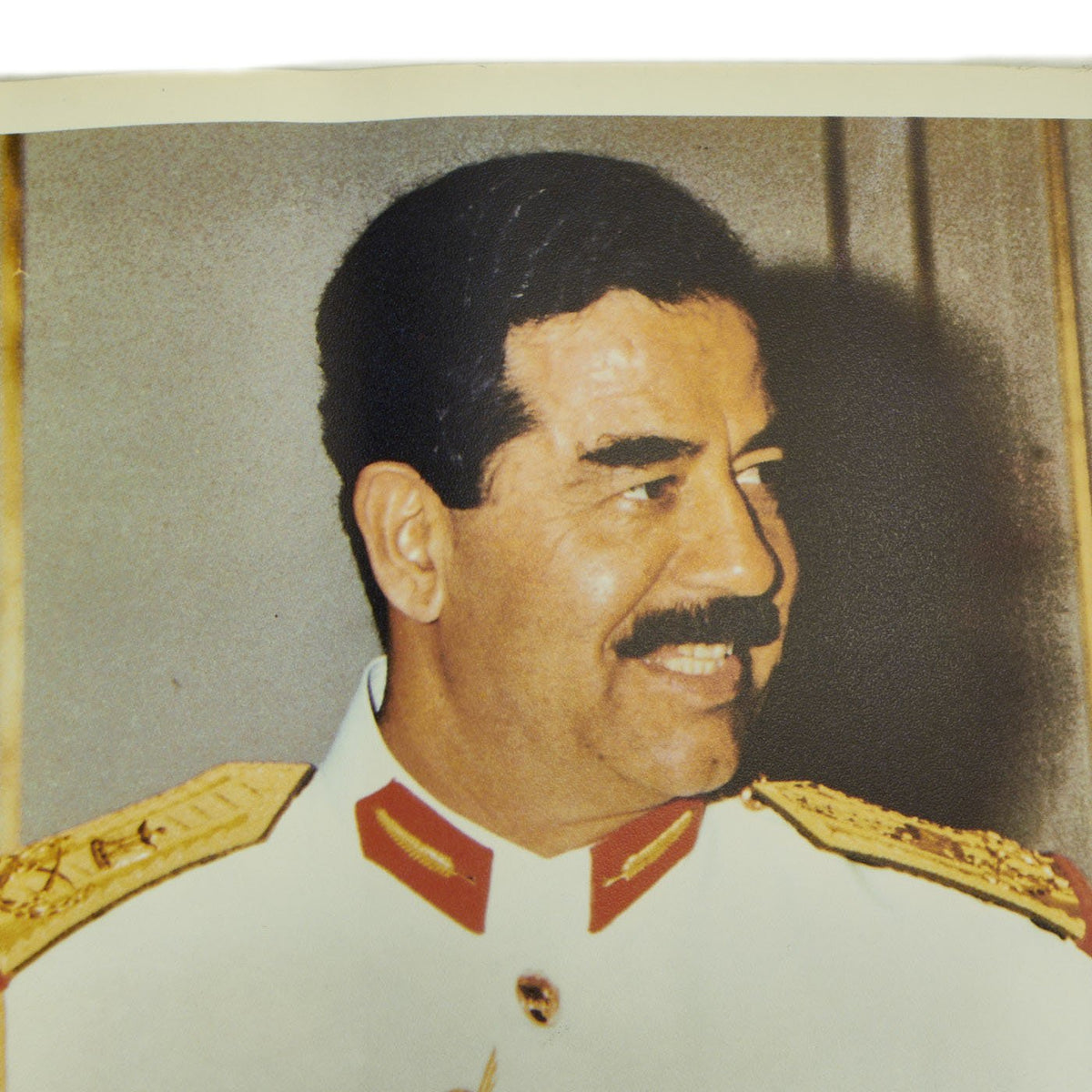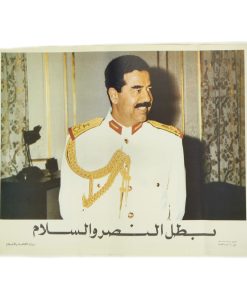Original Desert Storm 1991 Captured Saddam Hussein Iraqi Propaganda Poster – 27” x 19.5” Original Items
$ 250,00 $ 100,00
Original Item: Only one available. Iraqi Propaganda Poster featuring Saddam Hussein posed in a white dress uniform. Certainly captured during Operation Desert Storm. Condition is excellent. Measures approximately 27” x 19.5”
Saddam and the Gulf War:
On 2 August 1990, Saddam invaded Kuwait, initially claiming assistance to “Kuwaiti revolutionaries,” thus sparking an international crisis. On 4 August an Iraqi-backed “Provisional Government of Free Kuwait” was proclaimed, but a total lack of legitimacy and support for it led to an 8 August announcement of a “merger” of the two countries. On 28 August Kuwait formally became the 19th Governorate of Iraq. Just two years after the 1988 Iraq and Iran truce, “Saddam Hussein did what his Gulf patrons had earlier paid him to prevent.” Having removed the threat of Iranian fundamentalism he “overran Kuwait and confronted his Gulf neighbors in the name of Arab nationalism and Islam.”
When later asked why he invaded Kuwait, Saddam first claimed that it was because Kuwait was rightfully Iraq’s 19th province and then said “When I get something into my head I act. That’s just the way I am.” Saddam Hussein could pursue such military aggression with a “military machine paid for in large part by the tens of billions of dollars Kuwait and the Gulf states had poured into Iraq and the weapons and technology provided by the Soviet Union, Germany, and France.”
Shortly before he invaded Kuwait, he shipped 100 new Mercedes 200 Series cars to top editors in Egypt and Jordan. Two days before the first attacks, Saddam reportedly offered Egypt’s Hosni Mubarak 50 million dollars in cash, “ostensibly for grain.”
U.S. President George H. W. Bush responded cautiously for the first several days. On one hand, Kuwait, prior to this point, had been a virulent enemy of Israel and was the Persian Gulf monarchy that had the most friendly relations with the Soviets. On the other hand, Washington foreign policymakers, along with Middle East experts, military critics, and firms heavily invested in the region, were extremely concerned with stability in this region. The invasion immediately triggered fears that the world’s price of oil, and therefore control of the world economy, was at stake. Britain profited heavily from billions of dollars of Kuwaiti investments and bank deposits. Bush was perhaps swayed while meeting with British prime minister Margaret Thatcher, who happened to be in the U.S. at the time.
Cooperation between the United States and the Soviet Union made possible the passage of resolutions in the United Nations Security Council giving Iraq a deadline to leave Kuwait and approving the use of force if Saddam did not comply with the timetable. U.S. officials feared Iraqi retaliation against oil-rich Saudi Arabia, since the 1940s a close ally of Washington, for the Saudis’ opposition to the invasion of Kuwait. Accordingly, the U.S. and a group of allies, including countries as diverse as Egypt, Syria and Czechoslovakia, deployed a massive number of troops along the Saudi border with Kuwait and Iraq in order to encircle the Iraqi army, the largest in the Middle East.
Saddam’s officers looted Kuwait, stripping even the marble from its palaces to move it to Saddam’s own palace.
During the period of negotiations and threats following the invasion, Saddam focused renewed attention on the Palestinian problem by promising to withdraw his forces from Kuwait if Israel would relinquish the occupied territories in the West Bank, the Golan Heights, and the Gaza Strip. Saddam’s proposal further split the Arab world, pitting U.S.- and Western-supported Arab states against the Palestinians. The allies ultimately rejected any linkage between the Kuwait crisis and Palestinian issues.
Saddam ignored the Security Council deadline. Backed by the Security Council, a U.S.-led coalition launched round-the-clock missile and aerial attacks on Iraq, beginning 16 January 1991. Israel, though subjected to attack by Iraqi missiles, refrained from retaliating in order not to provoke Arab states into leaving the coalition. A ground force consisting largely of U.S. and British armored and infantry divisions ejected Saddam’s army from Kuwait in February 1991 and occupied the southern portion of Iraq as far as the Euphrates.
On 6 March 1991, Bush announced “What is at stake is more than one small country, it is a big idea—a new world order, where diverse nations are drawn together in common cause to achieve the universal aspirations of mankind: peace and security, freedom, and the rule of law.”
In the end, the Iraqi army proved unable to compete on the battlefield with the highly mobile coalition land forces and their overpowering air support. Some 175,000 Iraqis were taken prisoner and casualties were estimated at over 85,000. As part of the cease-fire agreement, Iraq agreed to scrap all poison gas and germ weapons and allow UN observers to inspect the sites. UN trade sanctions would remain in effect until Iraq complied with all terms. Saddam publicly claimed victory at the end of the war.
Fast Shipping with Professional Packaging
Thanks to our longstanding association with UPS FedEx DHL, and other major international carriers, we are able to provide a range of shipping options. Our warehouse staff is expertly trained and will wrap your products according to our exact and precise specifications. Prior to shipping, your goods will be thoroughly examined and securely secured. We ship to thousands clients each day across multiple countries. This shows how we're dedicated to be the largest retailer on the internet. Warehouses and distribution centres can be located throughout Europe as well as the USA.
Note: Orders with more than one item will be assigned a processing date depending on the item.
Before shipping before shipping, we'll conduct a thorough inspection of the items you have ordered. Today, the majority of orders will be delivered within 48 hours. The delivery time will be between 3-7 days.
Returns
The stock is dynamic and we cannot completely manage it because multiple stakeholders are involved, including our factory and warehouse. So the actual stock may alter at any time. It's possible that you may not receive your order once the order has been made.
Our policy is valid for a period of 30 days. If you don't receive the product within 30 days, we are not able to issue a refund or an exchange.
You can only return an item if it is unused and in the same state as the day you received it. You must have the item in its original packaging.
Related products
Uncategorized
Uncategorized
Uncategorized
Armored Burgonet Helmet & Polearm from Scottish Castle Leith Hall Circa 1700 Original Items
Uncategorized
Uncategorized
Uncategorized
Uncategorized
Uncategorized
Uncategorized
Uncategorized
Uncategorized
Uncategorized
Uncategorized
Angolan Rebel 1970s era 60mm Inert Display Mortar from Angolan Civil War Original Items
Uncategorized
Uncategorized
Uncategorized
Uncategorized
Uncategorized
Armoured Fighting Vehicles of the World: AFVs of World War One (Hardcover Book) New Made Items
